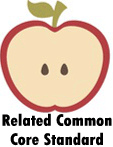Preschool Spelling Worksheets
Related ELA Standard: L.K.1

Preschool is considered the time that builds the foundation for all future spelling challenges. Students at this level start to learn spelling by learning two-letter words such as: by, me, and it. Once they have success at with those, they move on to learning about word families. These are words that all have the same consonant pair or vowel-consonant pair. From there they begin to learn how sounds and letter relate and start working on more challenging words and letter combinations. These worksheets will help teachers introduce the concept of spelling to children. Everything is present in an organized and colorful setting.
Preschool Spelling Worksheets:
ee Words -
Do you see the bee? Just take a second to take a look and spell and rewrite each word.
Wag the Dog -
Say each word. Trace each of them twice and then write the letters of the word in the blank box on your own.
Vowel Fill -
Look at the picture. Fill in the blank with the correct vowel: a, e, i, o or u. Then write the word.
Say and Trace -
We work with the -un family words. Words include: bun, fun, run, and sun.
Mom and Pets -
Where do these two come in order of importance for you? I lean towards my mom, but my puppy is so cute.
Unscramble and Spell -
Unscramble the word. Write the word. These terms are not direct relations to the pictures. In many cases they are adjectives that describe them.
Trace Digs -
Trace the word and then freehand it. You will end up writing each word three times in all.
The -ob Worksheet -
I wonder if the first picture was caused by the second? I know that I would sob, if I were to get robbed.
Miss Me? -
Fill in the last part of each word. Make sure to write the complete word out.
The -ys -
The first is the context of being an author. The second image is someone telling some one else their name.
Outlines and Writing -
We look at grade level appropriate spelling words and give you an opportunity to trace and practice with them.
Unscramble Review -
Start by determining the words that are scrambled and then write them on the line that has been provided.
First Letters -
Trace the first letter. Fill in the last part of each word by writing the entire work.
Mixed Up -
Unscramble each of the words. Use the terms from the word bank to help you.
How to Teach Spelling
Spelling is an important lesson that children should be taught at a young age. It develops their reading skills and help them to learn how to be better language communicators. This also helps them form a solid foundation between letters and the sounds that they make by themselves and their neighbors. Spelling errors are often found much more easily than any form of error in writing. Here are some tips that will help you teach spelling to children.
Focus On Sounds More
Children will confuse the spellings if you will let them focus on the letters only. Teach them that spelling is a combination of both letters and sounds. Teach them the sounds of each alphabet. Allow them to focus on the sounds more than the words. This is because it is easier to spell with the help of the sounds.
Teach Similar Spelling Patterns
An easier way to introduce spelling to children is by focusing on similar letter patterns. There are many different words in the English language that have a similar spelling pattern. This sequence and pairing of letters also makes a similar sound. It will help the children remember the word easily. Examples of similar spelling patterns are "igh", "ch", "th", etc.
Use Color
Children love colors. Colors also help in triggering certain parts of the brain. You can use a yellow highlighter to highlight the spelling of the words. Then you can ask the child to remember the spelling and write it with the colored highlighter on a separate page.
Make Them Spell Their Name
An exciting way to catch the interest of the children is to let them know that they will spell their own name. Teach them all the alphabets and their sounds. Then ask them to guess their own spelling with the help of sounds.
Start With Simple Words
It is always advisable to start with simpler words when introducing the concept of spelling to the children.
